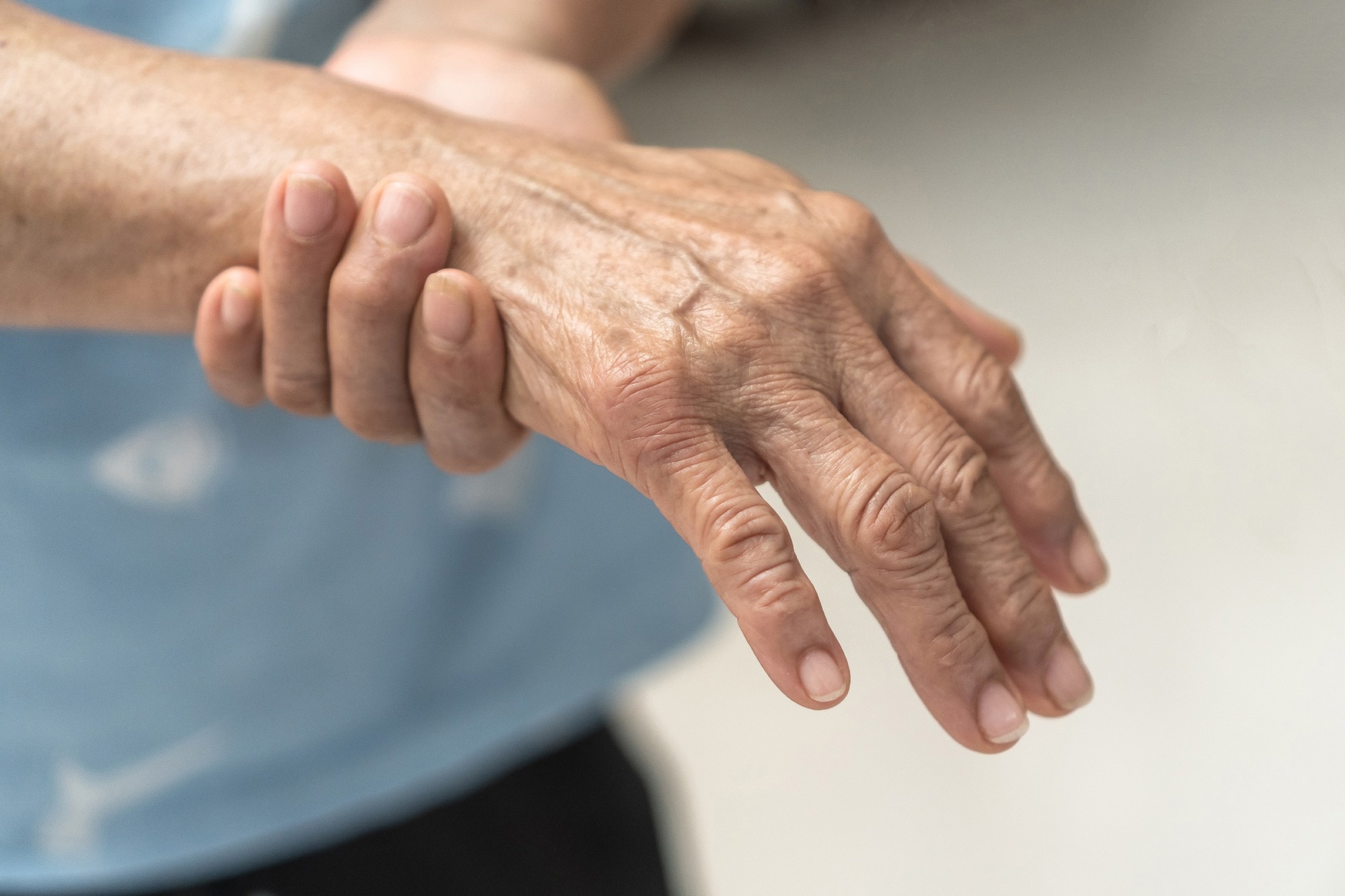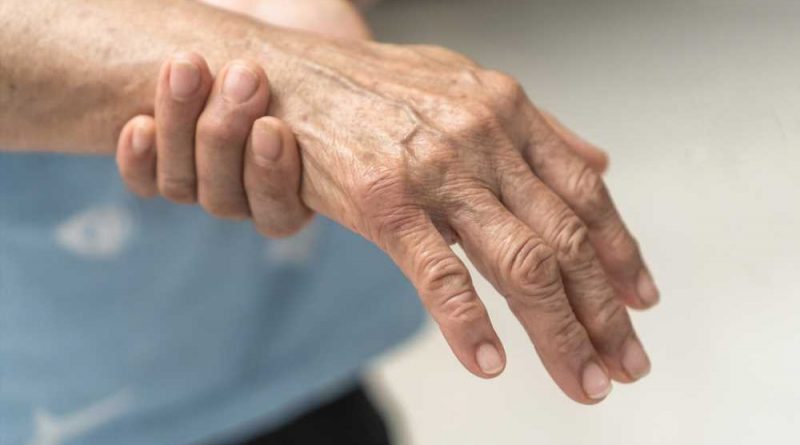Is Guillain-Barré syndrome induced by SARS-CoV-2 vaccination?
In a recent study published in Eurosurveillance, researchers investigated whether severe acute respiratory syndrome coronavirus 2 (SARS-CoV-2) vaccines induced Guillain-Barré syndrome (GBS).
 Study: Rare cases of Guillain-Barré syndrome after COVID-19 vaccination, Germany, December 2020 to August 2021. Image Credit: Chinnapong/Shutterstock.com
Study: Rare cases of Guillain-Barré syndrome after COVID-19 vaccination, Germany, December 2020 to August 2021. Image Credit: Chinnapong/Shutterstock.com
Background
Antecedent infections stimulate autoimmune polyradiculoneuropathies, such as GBS. Previous cohort studies and case reports have reported that Guillain-Barré syndrome, inclusive of Miller Fisher syndrome (MFS), could develop following the receipt of vector-based SARS-CoV-2 vaccines such as Vaxzevria (AstraZeneca's ChAdOx1 nCoV-19 vaccine) and Janssen's Ad26.COV2.S vaccine.
Of note, facial diplegia presenting with none to minor motor functional deficits and paraesthesia (FDP) has been reported among GBS cases following vector-based SARS-CoV-2 vaccinations.
Since the variant has been identified in <5.0% of Guillain-Barré syndrome cases, there are concerns regarding whether paresis on both sides of the face, with the presence or absence of motor deficits, may characterize GBS following coronavirus disease 2019 (COVID-19) vaccinations.
About the study
In the present study, researchers investigated GBS occurrence following vector- and messenger ribonucleic acid (mRNA)-based SARS-CoV-2 vaccines among Germans.
Data obtained from the national authority of Germany for biomedicines and vaccines, i.e., the Paul-Ehrlich Institute, submitted by health professionals, marketing authorization holders, pharmacists, physicians, and consumers, were analyzed.
In addition, the EudraVigilance database was searched between December 21, 2020, and August 31, 2021, using terms such as "Guillain-Barré syndrome", "demyelinating and axonal polyneuropathy", "acute polyneuropathy", "autoimmune-type demyelinating disease", “diplegia”, “Bell's phenomenon”, “facial paresis”, and “facial paralysis”.
Two health physicians validated the records using the definition of Brighton Collaboration’s (BC) Guillain-Barré syndrome. In the case of inadequate data, the team requested more information from the physicians using paper-based questionnaires or medical examination reports from the reporting individuals in the case of accessible contact information.
The team compared observed versus expected GBS cases by analyzing GBS frequencies reported to the Paul-Ehrlich Institute following COVID-19 vaccinations.
Standardized morbidity ratios (SMRs) were calculated, and SMR values below 1.0 indicated significantly lower observed cases than expected cases. Cases of GBS after influenza vaccinations between January 1, 2020, and March 31, 2021, were used as negative controls.
Level 1.0 represented the utmost certainty for a GBS diagnosis, whereas levels 2.0 and 3.0 denoted lower certainty levels. GBS or MFS reports not corresponding to certainty levels 1.0, 2.0, or 3.0 and those with incomplete symptom data were designated level 4.0 certainty, and the fifth level denoted GBS and MFS exclusions.
The team included cases of GBS diagnosed through August 31, 2021, with the onset of symptoms post-vaccination, diagnostic certainty levels between 1.0 and 4.0, and those with the period between COVID-19 vaccination and initial GBS symptoms, i.e., the time to onset (TT0), known.
They determined SARS-CoV-2 vaccine exposure using digital data monitoring system data, Paul-Ehrlich Institute data, and information provided by private practice physicians to ascertain the vaccine-associated age.
The team used the age-based pre-COVID-19 incidence rates of GBS among Danish individuals to calculate the frequency of expected GBS cases. A 3.0-to-42.0-day risk window was used for the onset of GBS symptoms following vaccination.
In addition, the team performed sensitivity analyses by limiting the analysis to cases of GBS meeting diagnostic certainty levels 1.0, 2.0, or 3.0, with symptom onset within 3.0 days to 2.0 weeks and 3.0 to 30 days of COVID-19 vaccination.
Results
By August 31, 2021, >101.0 million COVID-19 vaccinations had been provided to Germans, including 77.0 million, > 9.0 million, >12 million, and >3.0 doses of Comirnaty, Spikevax, Vaxzevria, and Ad26.COV2.S vaccines, respectively. Between January 1, 2020, and March 31, 2021, >16 million influenza vaccine doses were distributed to German individuals.
Between December 27, 2020, and August 31, 2021, 214.0 GBS cases following SARS-CoV-2 vaccines were documented, of which 46 cases with TTO either unknown or beyond the risk window and 12 cases with unspecific evidence of antecedent (such as gastrointestinal or upper respiratory tract) infections within six weeks before the onset of the initial neurological symptoms, were excluded.
All vaccines, other than Ad26.COV2-S was administered in two doses three to six weeks apart. GBS cases following Vaxzevria vaccinations were mainly documented following the initial dose (59 and four GBS cases after the initial and subsequent dose, respectively).
Patients developing GBS after Vaxzevria and Ad26.COV2.S vaccinations frequently developed facial paresis (22 out of 76 and nine out of 23 individuals, respectively) in comparison to Comirnaty (four out of 50), Spikevax (none out of seven), and influenza vaccine recipients (one out of 18).
Bilateral facial paresis was documented among 20% and 26% of Vaxzevria and Ad26.COV2.S vaccinees, respectively, whereas the proportion of FDP cases (with non-significant paresis) was 1.30% among Vaxzevria vaccinees and 8.70% among Ad26.COV2.S vaccinees. Across ages, the SMRs for Vaxzevria and Ad26.COV2.S vaccines were 3.1 and 4.2, respectively.
The SMRs were significantly increased among observed middle-aged Vaxzevria and Ad26.COV2.S recipients. Sensitivity analyses yielded similar findings, indicating that the primary analysis findings were robust.
Conclusion
Overall, the study findings highlighted GBS as a rare adverse event following vectored COVID-19 vaccinations such as those by Vaxzevria or Ad26.COV2.S vaccines, as per previous studies.
In addition, GBS development following Vaxzevria and Ad26.COV2.S vaccinations may present with paresis on both sides of the face.
-
Lehmann, H. et al. (2023) "Rare cases of Guillain-Barré syndrome after COVID-19 vaccination, Germany, December 2020 to August 2021", Eurosurveillance, 28(24). doi: 10.2807/1560-7917.es.2023.28.24.2200744. https://www.eurosurveillance.org/content/10.2807/1560-7917.ES.2023.28.24.2200744
Posted in: Medical Science News | Medical Research News | Medical Condition News | Disease/Infection News | Healthcare News
Tags: Bell's Phenomenon, Coronavirus, covid-19, Diagnostic, Facial Paralysis, Frequency, Guillain-Barré Syndrome, Influenza, Paraesthesia, Paralysis, Respiratory, Ribonucleic Acid, SARS, SARS-CoV-2, Severe Acute Respiratory, Severe Acute Respiratory Syndrome, Syndrome, Vaccine

Written by
Pooja Toshniwal Paharia
Dr. based clinical-radiological diagnosis and management of oral lesions and conditions and associated maxillofacial disorders.
Source: Read Full Article



